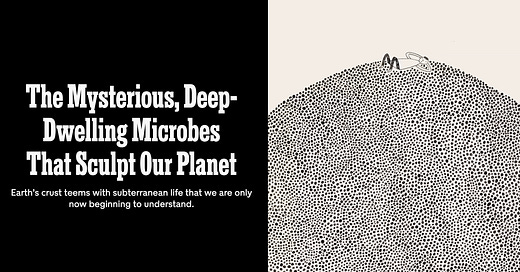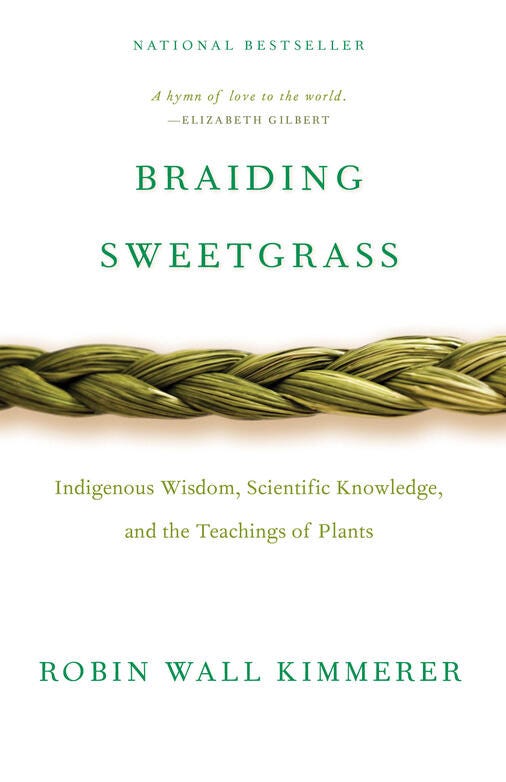I love the book, Braiding Sweetgrass by Robin Wall Kimmerer. She talks about everything in our environment as if it has some sort of sentience. Even the rocks are alive in some way, just moving at a much slower pace than we can perceive. Continental shifts are measurable evidence that it is so.
This article appeared in Tuesday morning’s New York Times newsletter, and in spite of its length, it captured my interest and sustained it to the very end.
It seems to me that it validates the view that the earth is not an inanimate object on which life as we know it sits on the skin of the apple, but a vibrant, living being filled with activity far beneath us, not coming from above, but thriving far below on its own. I am intrigued by this article, and I don’t know with whom to talk about it.
I am sharing the link here since the world of Substack seems to be
a place where the seriously curious dwell.
I am fascinated with points at which various elements of reality seem to intersect and demonstrate that our binary approach is inadequate. This is a risk for me. If anyone comments using technical language, I will likely be lost quickly.
So, be gentle.
Seriously curious,
Peter






Love this, Peter. Science backing up what cultures around the world who honour/treat the planet as a living being. Mother Earth, Pachamama- in Māori, Papatūānuku- the land is mother, the sky is called Ranginui/father. The list goes on. I love thinking/feeling about it this way too.
Plants, trees, bushes, and grass have systems that deliver water, and systems that rid them of oxygen as we have a system that brings nutrients to our cells and a system for ridding our bodies of waste and a system for breathing. Why not rocks?